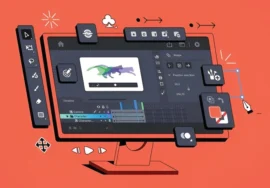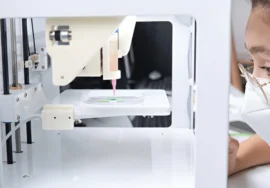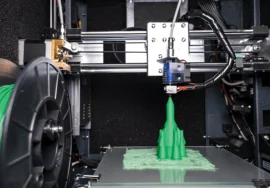
The realm of 3D animation is a dynamic landscape, evolving with technological advancements and shifting cultural preferences. As we step into 2025, several trends are poised to dominate the industry, shaping the visual narratives of the future.
Hyperrealism: Bridging the Gap Between Reality and Animation
One of the most prominent trends is the relentless pursuit of hyperrealism. Animators use advanced rendering techniques and meticulous attention to detail to create visuals that are indistinguishable from live-action footage. This level of realism opens up new possibilities for storytelling, allowing for immersive experiences that blur the lines between fantasy and reality.
The Rise of AI in Animation
Artificial intelligence is revolutionizing the animation process. From character generation and animation to scriptwriting and editing, AI is becoming an invaluable tool for creators. While concerns about job displacement persist, integrating AI is more likely to augment human creativity rather than replace it. Expect to see more AI-assisted animation in the coming years, pushing the boundaries of what is achievable.
Immersive Experiences: VR, AR, and Beyond
Virtual and augmented reality continue to gain traction, offering unparalleled immersive experiences. Animators are at the forefront of developing captivating content for these platforms. Whether it’s creating interactive storytelling environments or designing engaging AR experiences, the demand for skilled animators in this space is growing.
Sustainable Animation: A Growing Consciousness
Environmental concerns are permeating various industries, and animation is no exception. There is a growing emphasis on sustainable practices, from energy-efficient production pipelines to eco-friendly materials. Animators are exploring ways to incorporate environmental messages into their work, raising awareness about pressing issues.
Character-Driven Storytelling: The Heart of Animation
While technological advancements are undeniable, the core of compelling animation remains strong character development. Audiences crave relatable and resonant characters. As such, animators are focusing on creating characters with depth, complexity, and authenticity. This trend is likely to persist, ensuring that emotional connections between characters and viewers stay at the heart of the storytelling experience.
As the animation industry continues to evolve, these trends will shape the visual landscape for years to come. By staying informed and adaptable, animators can position themselves at the forefront of innovation, creating groundbreaking work that captivates audiences worldwide.
Evolving Animation Styles
While realism reigns supreme, there’s a growing appreciation for diverse animation styles. From the nostalgic charm of hand-drawn animation to the bold esthetics of anime and the playful energy of cartoonist designs, there’s a place for every style in the modern animation landscape. Expect to see existing classical styles, often blended with contemporary techniques to create striking and resonant works.
Prizing Diversity and Inclusion
The animation industry recognizes the need for greater diversity and inclusion both on screen and behind the scenes. This trend extends to characters, storylines, and the workforce itself. Audiences are demanding representation that reflects the world around them, and animators are responding by creating more inclusive and diverse content.
Interactive Animation: Beyond the Screen
The lines between animation and gaming are blurring as interactive animation experiences gain popularity. Animators are collaborating with game developers to create engaging and immersive worlds where viewers can actively participate in the story. This trend is driven by advancements in technology, such as motion capture and haptic feedback, which allow for more realistic and interactive experiences.
The Future of Animation
The future of animation is bright and full of possibilities. As technology continues to advance, we can expect to see even more groundbreaking innovations in the field. From the development of new animation software and hardware to the exploration of virtual and augmented reality, the potential for creative expression is limitless.
By staying informed about these trends and embracing new technologies, animators can position themselves at the forefront of the industry, creating captivating and impactful work that resonates with audiences worldwide.





